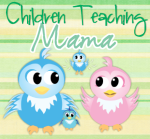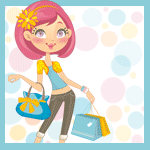What
parent doesn't live in fear of the day his or her child comes home with
a warning that head lice has appeared in the classroom--or worse, the
day the school nurse calls to say it's his or her own child with lice
this time? The fact is, head lice has become more common in recent
years, and anyone can get it--even children as young as preschool-age.
So what do you do if head lice makes an appearance on your child? Well, the first rule of thumb is not to panic, and not to become too distressed. Lice are not dangerous, are not an indication of poor hygiene or bad parenting and are not an emergency. However, you will typically need to keep your child home from preschool until he or she has at least gone through one lice treatment, depending on school policy.
Once you've calmed down and reminded yourself that lots of kids get lice and it is a treatable situation, here are some steps you can take to remedy the situation:
1) First, if your child's school or daycare doesn't already know, inform them immediately of the situation. Schools typically keep the details confidential, and inform other parents only that a case of lice has been identified in the class--not who exactly has it. While lice isn't something anyone should be ashamed of, this may make you feel better about reporting it.
2) Wash--in hot water--your child's bedding, towels, hats, hooded jackets or sweatshirts and anything else you can think of that has been in contact with his or her head. For items liked pillows and stuffed animals that you may not want to immerse in water, you can either throw them in the dryer on high heat or bag them up in well-sealed garbage bags and place them in the garage for a day or two. Lice can't live long without human contact for food.
3) Obtain a treatment system; call your pediatrician if you want advice on the best one to buy. The drugstore sells various lice treatments, generally special shampoos and sometimes conditioners that are liberally applied to the hair, plus a uniquely-designed comb designed especially for removing the nits, or lice eggs, that cluster near the hair roots and are sticky and difficult to remove otherwise.
4) Settle in for a time-consuming task. Typical lice treatments are tedious and time-consuming--but usually effective if used correctly. You will need to meticulously examine every hair on your child's head, using the special comb to separate the hairs, find the nits and remove them. If even a couple of nits are left in the hair, the lice will appear again soon. Try setting your preschooler up in front of an age-appropriate, entertaining DVD or television show, arm yourself with your lice removal tools, and go to work. Most lice treatment systems recommend a second treatment 24 hours after the first for complete eradication.
5) Lastly, keep in mind that there are now professional services that conduct lice removal for a fee.
About the Author: Brianna
Kelly has over 7 years experience writing and publishing articles about
childcare education and parenting. She writes on a regular basis for a
Dublin based childcare provider called Giraffe Childcare.








4 comments:
thanks for the tips- i had lice as a kid and i still remember how much i hated it!
I too had lice as a kid!! It took over a month to go away. I will never forget it. I definitely don't want my son to get lice.
Thank you for the tips, I hope I won't need them but its good to know my son has already brought home sickness from school so this is definitely not off the radar
I had to treat my daughter once and she has a ton of hair it was the worst nightmare great tips though thank you.
Post a Comment